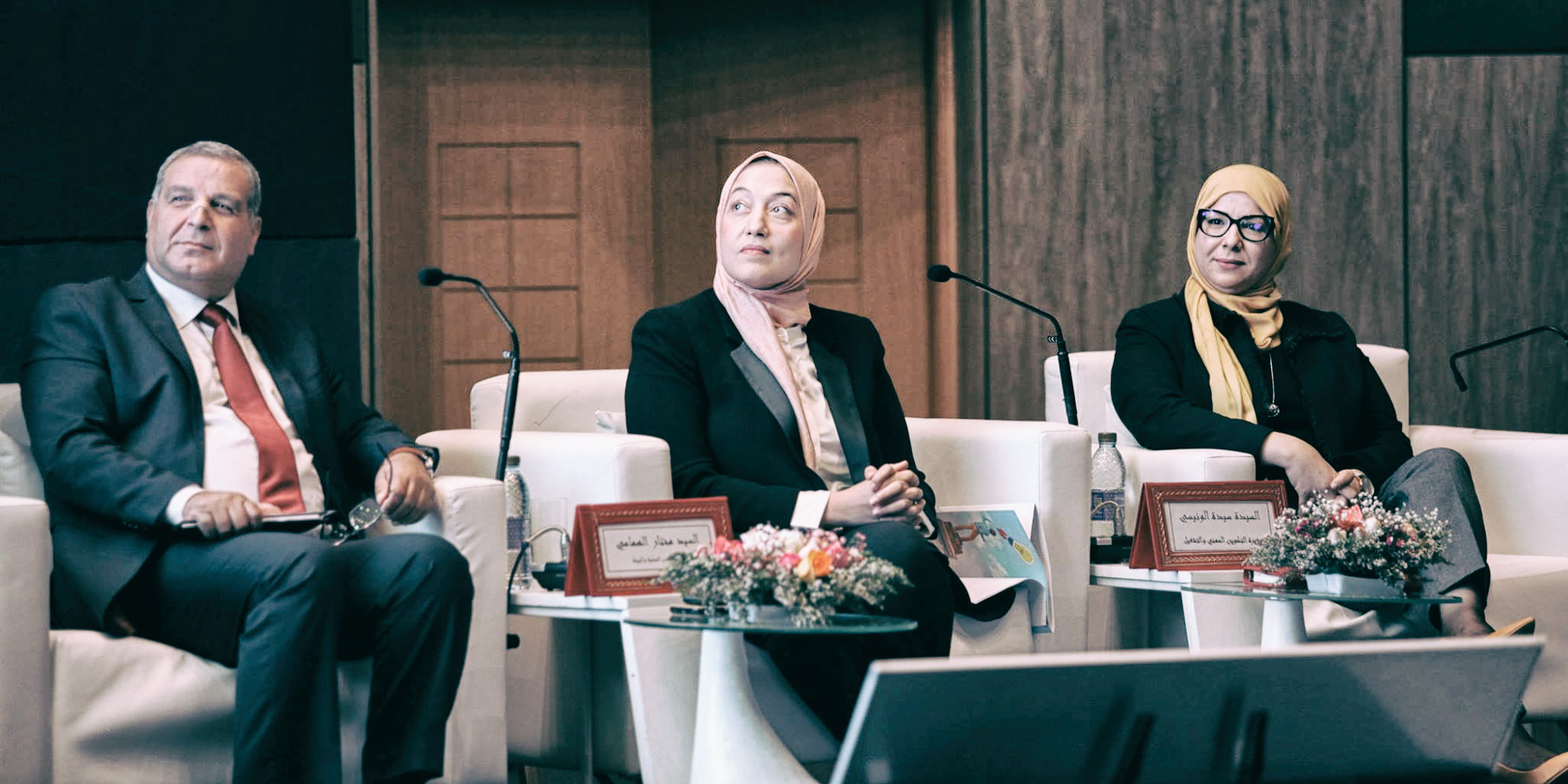Surrounded by vacant lots in a suburb of Tunis called El Kram, the Center for Self-Employment Training and Promotion (CFPT) is rather unremarkable. Situated next to the El Kram Technical High School, its location says a good deal about the extent to which we value vocational training. Several two-story buildings house the administration and classrooms, large warehouses containing machinery used during practical courses, a coffee stand that is swamped during break times, and a cafeteria that serves food for free.

El Kram’s CFPT offers several technical training programs: aluminum and PVC carpenter, refrigeration assembly and repair, commercial cooling and air conditioning technician, welder, elevator assembly and maintenance technician, industrial maintenance technician, electromechanic, technician in electronic maintenance of automated systems and arc welder. At the same time, emphasis is also placed on transversal skills such as languages and project development. « Our objective is to enable young CAP [Vocational Aptitude Certificate] or BTP [Vocational Technician Certificate] graduates to create their own businesses », explains CFPT director Houyem Zgolli. « The trainings we offer provide our graduates with the possibility of becoming self-employed for two reasons: these are trades they can practice alone and without a large initial investment ». She continues, « We want to introduce a new culture of entrepreneurship and private initiative to these youth ».
The Center or the street
Over 400 interns applied for registration this year. The youngest of them are 16 years old. They fill into the large courtyard during break time, sitting with their backs against the one wall which catches the sunlight, cigarette in hand. The supervisor greets them one by one, receiving in response questions and requests: « Why didn’t Ms. so-and-so show up today? » « Please don’t count my absence the other day! » « I had a problem yesterday and couldn’t make it. Could you speak with the instructor? » etc. She’s like a big sister to them, and with good reason. Zgolli has worked at CFPT for several decades now.

She has seen interns come and go. Her account of the situation is a bitter one. « Sure, I can tell you about the minority who succeed, who are hired by big companies and receive a good salary, or who start their own businesses, but it’s the exception that proves the rule » she says woefully. « Those who succeed have often already started a business project when they arrive at the center. For the others, it’s more difficult ». She adds, « There are many disadvantaged youth who don’t believe in the future and don’t even know why they’re here. They only dream of one thing: leaving the country ». Here in El Kram, CFPT interns seem particularly vulnerable to poverty, drugs and violence. « Today, these centers have a negative image because it’s often youth in very difficult situations who come here. It’s a vicious cycle, since ultimately we’re only reproducing social inequalities », says one instructor.
Like Zgolli, he isn’t very hopeful. « The content of trainings is not at all adapted to our reality. There is reason enough to despair when, on a daily basis, I deal with violent interns or 16-year olds who open their Facebook page to copy their name onto the exam sheet. We keep on because we know that if these youth leave the center, they’ll be left to the streets ». He doesn’t hesitate to take a sarcastic jab at the Ministry of Vocational Training and Employment: « I would love to have interns in my class like those welcomed by the Minister ».

Vocational training, antidote to unemployment?
Sayida Ounissi has served as Minister since November 14, 2018. Since 2016 when she held the position of Secretary of State for Vocational Training, Ounissi has not let up in her lobby to reform the sector. During her speech before parliament in November 2018, Ounissi announced that 24% of her Ministry’s budget would be dedicated to vocational training. At Tunis’ City of Culture on March 4, Ounissi hosted the launching of a large campaign, Innajim. This communications operation aims to rejuvenate what appears to be a poor relative of the education system.

Outlined in 14 points, the reform’s primary objective is to improve the employability of young graduates by adapting training to the demands of the work market. With an unemployment rate affecting 32% of youth, no one would question the relevance of such a reform. According to the National Observatory of Employment and Qualifications, 65% of youth with vocational training have found a job, 27.4% are unemployed and 7.6% are inactive. The unemployment rate is comparable that of higher learning graduates at 28.8%. So why encourage support for one over the other? Why would vocational training be used as a strategic lever against unemployment when CAP, BTS [Advanced Technician Certificate] and BTP graduates have also been hit hard by the employment crisis and condemned to low wages? A case in point: looking closely at the pay scale for private companies in the wiring industry, for instance, we find that a young CAP graduate earns nothing over 500 dinars net, while a BTP graduate earns at most 600 dinars net.

And so the solution must be entrepreneurship, with young graduates creating their own businesses? Today, amongst those who have found employment, 62% are salaried employees, 29% have intermittent work, and 9% have created their own projects. Such rates are still too low for the minister of Vocational Training and Employment, who recently insisted on the need to develop « an entrepreneurial culture amongst youth ». In vocational training centers like CFPT, she sees the ideal place to develop this culture, assuring that today these are « places of incubation ».
Between hope and disillusionment
The instructors we met at CFPT in El Kram would like to believe as much. « The youth that we orient towards vocational training are failing academically, that’s a fact. But even worse than this, they often have significant behavior problems. To simply throw around the affirmation that they can become entrepreneurs is a lie. They aren’t coded for it! » says an instructor who leads trainings in aluminum and PVC work. Beside him, his colleague is dismayed that « expectations are so high for vocational training centers, even though the simple fact of arriving at this phase means that it’s already too late ». He adds, « I’m not condemning these youth. I’m just saying that action must be taken before they end up here ». When we evoke the National Vocational Training Reform, instructors respond in unison, « We hear talk of reforms every year, but nothing comes of it ». The director of El Kram’s CFPT is more optimistic: « We are working with youth who want to make it, otherwise they wouldn’t be here. Indeed, one of the goals of the reform is to improve support for interns. At 16 years old, everything is still possible », she affirms.

Still, how can we ignore the existence of deep-seated mechanisms of marginalization in vocational training today? The probability of entering into vocational fields as opposed to general education remains extremely dependent on a student’s social background. Rendering the field more attractive through communication campaigns will not suffice to reduce general education’s predominance over vocational education. For in spite of whatever may be argued to the contrary, a vocational diploma in the vast majority of cases promises nothing more than a wage labor position and, by extension, a precarious situation and meager income. It would therefore seem that vocational training serves more to oil the economic machine than to create vocations and trades that enable youth to live with dignity. While the reform will most certainly help to alleviate the enrollment burden on universities and improve youth unemployment indicators, it also risks creating a good deal of misunderstanding.





iThere are no comments
Add yours